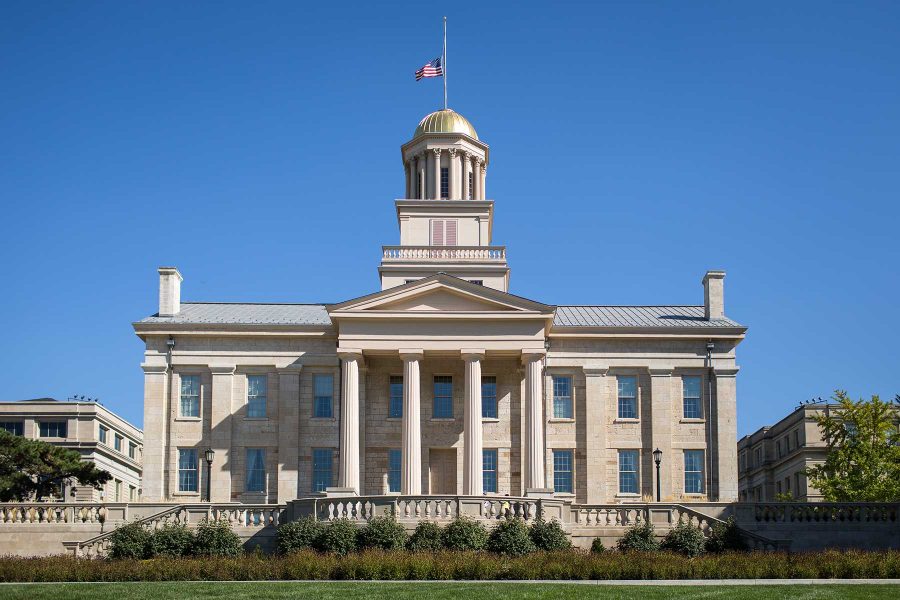UI mulls tuition plans
March 8, 2017
While the University of Iowa touts its affordability in admissions materials, facing the fiscal challenges brought on by state budget cuts might have the UI singing a different tune.UI President Bruce Harreld proposed a tuition plan that would raise the institution’s tuition to be more on par with the average of its national peer set approved by the state Board of Regents; currently, the UI offers the tuition rates that are among the lowest out of its peer set, which comprises six Big Ten universities and four additional schools.
In an interview with the DI last week, Harreld said the UI remains committed to a number of initiatives, but with the state’s financial situation, the university must determine the least painful area of the budget to cut from.
“We have the lowest state appropriations per student among our peer group,” he said. “We have the lowest administrative overhead among our peer group. … So when you come in, and we were allowed to have a 2 percent increase in tuition, almost every penny of that went back to the state with this de-appropriation.”
Resident undergraduate tuition and fees were locked in at the Dec. 6 regents meeting at $7,270 for the upcoming school year with a tuition increase at a base rate of 2 percent because of the regents’ “dynamic” two-year budget model for approving state appropriations requests and tuition rates. For nonresident undergraduate students, tuition and fees are $28,052 with an increase in the base tuition rate of 2.51 percent.
Over the course of fiscal 2019-2022, if the regents approve the UI’s plan, resident tuition increases would start at $784 and the increase for nonresident undergraduate tuition would be $1,119. The UI would see a budget increase of $91 million.
After the state’s $9.2 million reduction in funding for the UI, this is one component of the UI’s efforts to minimize the damage of the budget cuts.
Regent President Bruce Rastetter said at a press conference after the governing board’s Feb. 23 meeting that the regents would consider Harreld’s tuition plan and the possibility of setting different tuition rates for the UI than Iowa State University and the University of Northern Iowa.
“This board has worked really hard to maintain low tuition increases or tuition freezes when we’ve received enough state support,” Rastetter said. “… Accessibility and affordability is a critical component of public universities. … We want to find ways to make sure that we’re partners with the state and not have to raise tuition and increase student debt dramatically.”
At the time, the UI had cut five scholarships affecting legacy students. The scholarships were reinstated last week, though they will be discontinued for students after this fall’s incoming class.
The Daily Iowan had previously reported Harreld promised at the same regents’ meeting to put any additional funding above the fiscal 2017 commitment of $224 million in general funding toward scholarships for resident students.
UI Student Government President Rachel Zuckerman said that with the reality of budget cuts, tuition increases have to be considered and all students have to pay their fair share to ensure the UI can function at its best.
Should the UI’s tuition plan be approved down the line, Zuckerman said, and if the UI moves away from its position as the most affordable Big Ten institution, the UI needs to be transparent about it, since its affordability is used as a major selling point in admissions.
“We need to be really honest in our messaging so people know what to expect,” she said.
Zuckerman acknowledged the regents’ history of making the public universities accessible and affordable for residents a priority while letting nonresidents “subsidize” the cost of higher education for residents.
“I do think a good place to start is bringing resident tuition more in line with nonresidents … but the board and the Legislature need to care about all students at the university and not just all students who happen to have been born in Iowa,” she said.



